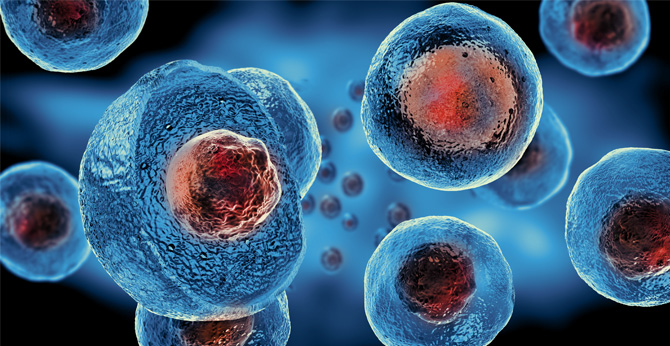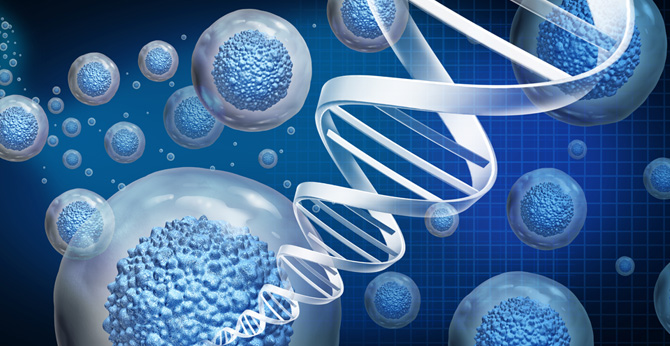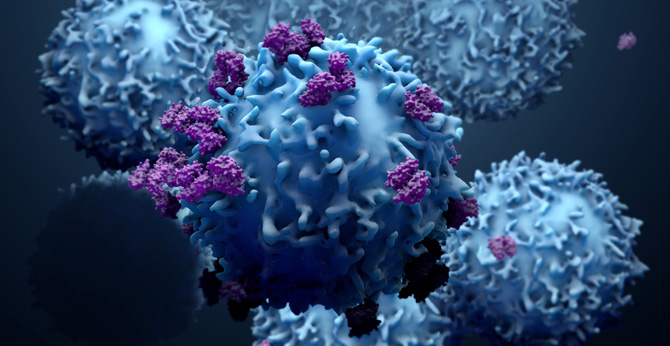All products and services are For Research Use Only and CANNOT be used in the treatment or diagnosis of disease.
The vector of anti-CD133 chimeric antigen receptor (CAR) is constructed for the engineering of T cells to target human CD133. The T cells are genetically modified through transduction with a lentiviral vector expressing scFv of anti-CD133 antibody linked to 4-1BB (CD137) and CD3ζ signaling domains. And the vector product was designed for the treatment of pancreatic cancer and colorectal cancer.
|
CAR Construction :
Fig.1 Flow cytometric analysis of CD133 protein glycosylation in Caco-2 and glioblastoma cell lines by anti-CD133 clone AC133. Doxorubicin-treated samples (black line), with isotype control (dark grey fill), were compared to DMSO vehicle control samples (black dashed line), with isotype control (light grey fill). Shown are representatives of three replicate experiments. Osmond, T. L., Broadley, K. W., & McCONNELL, M. J. (2010). Glioblastoma cells negative for the anti-CD133 antibody AC133 express a truncated variant of the CD133 protein. International journal of molecular medicine, 25(6), 883-888. |
|
CAR Construction : AC133 scfv-CD28-41BB-CD3ζ;
Fig.2 Flow cytometric analysis of AC133 expression on the target cells. Target cells used in this study: AC133-negative U251 WT cells, AC133+ CD133-OE U251 glioma cells, and AC133+ patient-derived NCH421k GBM-SCs. Zhu, X., Prasad, S., Gaedicke, S., Hettich, M., Firat, E., & Niedermann, G. (2015). Patient-derived glioblastoma stem cells are killed by CD133-specific CAR T cells but induce the T cell aging marker CD57. Oncotarget, 6(1), 171. |
|
CAR Construction : AC133 scfv-CD28-41BB-CD3ζ;
Fig.3 AC133 CAR T cell proliferation induced upon contact with different target cells. AC133-CAR T cells were labeled with CFSE and then co-cultured with the indicated types of irradiated target cells for 4 days. The extent Zhu, X., Prasad, S., Gaedicke, S., Hettich, M., Firat, E., & Niedermann, G. (2015). Patient-derived glioblastoma stem cells are killed by CD133-specific CAR T cells but induce the T cell aging marker CD57. Oncotarget, 6(1), 171. |
|
CAR Construction : AC133 scfv-CD28-41BB-CD3ζ;
Fig.4 IFN-γ secretion by CAR T cells upon contact with different target cells. AC133-CAR T cells or nontransfected T cells (NT) were co-cultured with different target cells for 24 h. Thereafter, culture supernatants were collected and analyzed for the concentration of IFN-γ by ELISA. Zhu, X., Prasad, S., Gaedicke, S., Hettich, M., Firat, E., & Niedermann, G. (2015). Patient-derived glioblastoma stem cells are killed by CD133-specific CAR T cells but induce the T cell aging marker CD57. Oncotarget, 6(1), 171. |
|
CAR Construction : AC133 scfv-CD28-41BB-CD3ζ;
Fig.5 Flow cytometric PKH-26 assay for the determination of target cell lysis. AC133-positive CD133-OE U251 glioma cells and NCH421k GBM-SCs were lysed by AC133-CAR T cells. U251 WT target cells and nontransfected T cells were used as negative controls. Zhu, X., Prasad, S., Gaedicke, S., Hettich, M., Firat, E., & Niedermann, G. (2015). Patient-derived glioblastoma stem cells are killed by CD133-specific CAR T cells but induce the T cell aging marker CD57. Oncotarget, 6(1), 171. |
|
CAR Construction : AC133 scfv-CD28-41BB-CD3ζ;
Fig.6 Microscopical images after 24-h co-culture of CAR T cells with AC133+ and AC133– target cells, respectively. AC133- U251 WT glioma cells still adhered to the culture plates, whereas the AC133+ CD133-OEU251 glioma cells had detached and formed clumps with the attacking AC133-CAR T cells. Zhu, X., Prasad, S., Gaedicke, S., Hettich, M., Firat, E., & Niedermann, G. (2015). Patient-derived glioblastoma stem cells are killed by CD133-specific CAR T cells but induce the T cell aging marker CD57. Oncotarget, 6(1), 171. |
|
CAR Construction : AC133 scfv-CD28-41BB-CD3ζ;
Fig.7 AC133-CAR T cells show therapeutic efficacy against established, orthotopic GBM-SC-derived glioma xenografts in mice. Bioluminescence images taken before (day 6, A) and after (day 26, B) the treatments with either AC133-specific CAR T cells or nontransfected control T cells. Zhu, X., Prasad, S., Gaedicke, S., Hettich, M., Firat, E., & Niedermann, G. (2015). Patient-derived glioblastoma stem cells are killed by CD133-specific CAR T cells but induce the T cell aging marker CD57. Oncotarget, 6(1), 171. |
|
CAR Construction : AC133 scfv-CD28-41BB-CD3ζ;
Fig.8 AC133-CAR T cells show therapeutic efficacy against established, orthotopic GBM-SC-derived glioma xenografts in mice. (C) Summary of all BLI measurements. Arrows, time of T cell injection; n, number of animals tested in each group. Zhu, X., Prasad, S., Gaedicke, S., Hettich, M., Firat, E., & Niedermann, G. (2015). Patient-derived glioblastoma stem cells are killed by CD133-specific CAR T cells but induce the T cell aging marker CD57. Oncotarget, 6(1), 171. |
|
CAR Construction : AC133 scfv-CD28-41BB-CD3ζ;
Fig.9 AC133-CAR T cells show therapeutic efficacy against established, orthotopic GBM-SC-derived glioma xenografts in mice. (D) Kaplan-Meier analysis revealed a statistically significant longer survival of the AC133-CAR T cell-treated mice compared to mice treated with nontransfected control T cells (p <0.003). Zhu, X., Prasad, S., Gaedicke, S., Hettich, M., Firat, E., & Niedermann, G. (2015). Patient-derived glioblastoma stem cells are killed by CD133-specific CAR T cells but induce the T cell aging marker CD57. Oncotarget, 6(1), 171. |
|
CAR Construction : AC133 scfv-CD28-41BB-CD3ζ;
Fig.10 Expression of T cell exhaustion marker PD1 and senescence marker CD57 on AC133-CAR T cells. Near absence of the exhaustion marker PD-1 and the senescence marker CD57 on AC133-CAR T cells after two rounds of expansion with anti-CD3, IL-2, and Zhu, X., Prasad, S., Gaedicke, S., Hettich, M., Firat, E., & Niedermann, G. (2015). Patient-derived glioblastoma stem cells are killed by CD133-specific CAR T cells but induce the T cell aging marker CD57. Oncotarget, 6(1), 171. |
|
CAR Construction : AC133 scfv-CD28-41BB-CD3ζ;
Fig.11 Expression of T cell differentiation marker on AC133-CAR T cells. T cell differentiation marker expression after two rounds of expansion: CAR T cells were stained with anti-CD62L-APC and anti-CD45RO-FITC (right) or matched isotype control antibodies (left). Most of the cells had a central memory phenotype (CD45RO+ Zhu, X., Prasad, S., Gaedicke, S., Hettich, M., Firat, E., & Niedermann, G. (2015). Patient-derived glioblastoma stem cells are killed by CD133-specific CAR T cells but induce the T cell aging marker CD57. Oncotarget, 6(1), 171. |
|
CAR Construction : AC133 scfv-CD28-41BB-CD3ζ;
Fig.12 Expression of T cell exhaustion marker PD1 and senescence marker CD57 on AC133-CAR T cells co-culture with target cells. A 24-h co-culture with NCH421k GBM-SCs, but not with CD133-OE or WT U251 cells, causes strong upregulation of CD57 on CAR T cells; PD-1 was slightly upregulated upon co-culture with NCH421k or CD133-OE U251 cells. Zhu, X., Prasad, S., Gaedicke, S., Hettich, M., Firat, E., & Niedermann, G. (2015). Patient-derived glioblastoma stem cells are killed by CD133-specific CAR T cells but induce the T cell aging marker CD57. Oncotarget, 6(1), 171. |
|
CAR Construction : AC133 scfv-CD28-41BB-CD3ζ;
Fig.13 Expression of T cell exhaustion marker and senescence markers on AC133-CAR T cells co-cultured for 24 h either alone or with NCH421k GBM-SCs. AC133-CAR T cells, cultured for 24 h either alone or with NCH421k GBM-SCs, were stained with anti-CD57 and analyzed for co-expression of either CD27 (top), CD28 (middle), or perforin (bottom) by flow cytometry. Zhu, X., Prasad, S., Gaedicke, S., Hettich, M., Firat, E., & Niedermann, G. (2015). Patient-derived glioblastoma stem cells are killed by CD133-specific CAR T cells but induce the T cell aging marker CD57. Oncotarget, 6(1), 171. |
More Published Data More Published Data
There are currently no customer reviews or questions for Anti-CD133 (AC133) h(41BB-CD3ζ) CAR, pCDCAR1 (CAR-LC241). Click the button below to contact us or submit your feedback about this product.
For research use only. Not intended for any clinical use. No products from Creative Biolabs may be resold, modified for resale or used to manufacture commercial products without prior written approval from Creative Biolabs.
For any technical issues or product/service related questions, please leave your information below. Our team will contact you soon.
 NEWSLETTER
NEWSLETTER
The latest newsletter to introduce the latest breaking information, our site updates, field and other scientific news, important events, and insights from industry leaders
LEARN MORE NEWSLETTER NEW SOLUTION
NEW SOLUTION
CellRapeutics™ In Vivo Cell Engineering: One-stop in vivo T/B/NK cell and macrophage engineering services covering vectors construction to function verification.
LEARN MORE SOLUTION NOVEL TECHNOLOGY
NOVEL TECHNOLOGY
Silence™ CAR-T Cell: A novel platform to enhance CAR-T cell immunotherapy by combining RNAi technology to suppress genes that may impede CAR functionality.
LEARN MORE NOVEL TECHNOLOGY NEW SOLUTION
NEW SOLUTION
Canine CAR-T Therapy Development: From early target discovery, CAR design and construction, cell culture, and transfection, to in vitro and in vivo function validation.
LEARN MORE SOLUTION